Is life in Denmark impossible without a personal registration number?
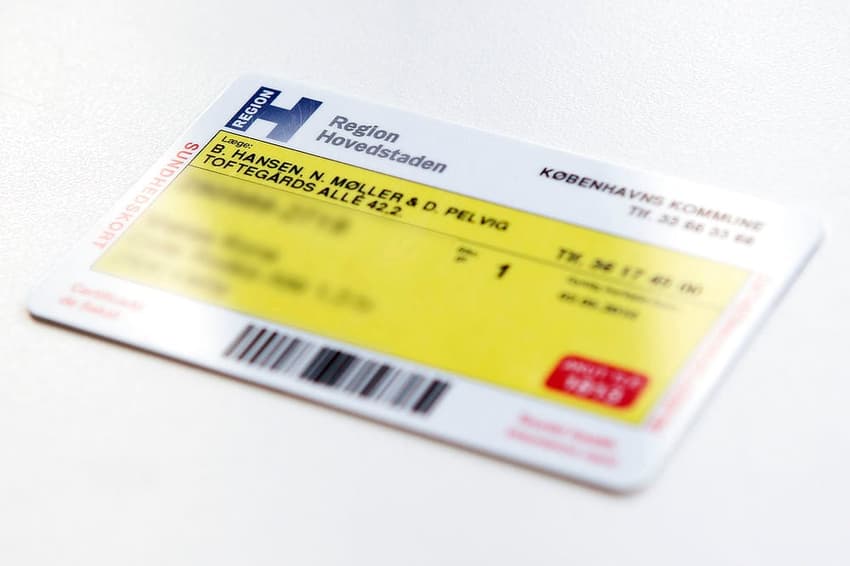
Ten digits printed on the front of a yellow card: your birthdate plus four other numbers. The CPR number is your pass to many services in Denmark, but how far can you get without it?
The CPR card, typically referred to as the yellow health insurance card, is a form of personal identification using individual personal registration (CPR) numbers, and residents of Denmark are legally required to have one.
Also a form of civil registration (the ‘CPR’ abbreviation comes from the Danish term Det Centrale Personregister), the card functions primarily as a healthcare card, providing access to the state funded public healthcare system.
But the CPR number is needed for a lot more than just healthcare.
Most state and municipal services require the yellow card as a form of personal identification and it is also a requirement for things like banks, telephone companies and even gyms.
Newcomers to Denmark are issued with cards after applying to their local municipalities with residency permit information. A residency permit is the official document needed to stay in the country for more than three months, or more than six months from your entry date if you are seeking a job. The process of obtaining the yellow card might take up to three weeks.
The common wisdom is that it's virtually impossible to get by in the Scandinavian country without the sacred 10-digit code.
But is that really true? Would a newcomer to the country without one be left stranded?
The Local put the theory to the test.
Banking and MobilePay
Using a foreign bank account in Denmark is not always the best option, some internationals would argue.
Dóra Lipka, a Hungarian student doing an internship in Aarhus, moved to Denmark in early February 2018. She spent three weeks waiting to get her residency permit and subsequently, a CPR number.
“It is not easy because before I moved here I asked my [Hungarian] bank and they said a fee will be deducted every time I withdraw cash, but luckily in Denmark, everything works with credit cards, so it is fine,” she says.
But if you would rather have an account at a Danish bank to avoid the fee for transactions, you might also be able to do so without a CPR number.
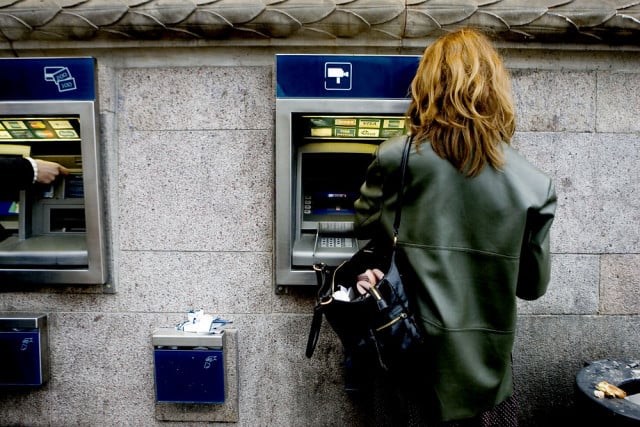
File photo: Uffe Weng/Ritzau Scanpix
Some banks ask for a CPR number as a requirement to initiate an account.
Pretending to be a newcomer to Denmark, we reached out to Danske Bank, inquiring about the necessity of having a CPR number. The customer service response was that it was an essential requirement to open a bank account.
However, other banks accept alternative forms of personal identification. For instance, Nordea accepts a Tax Identification Number (TIN) instead, according to press consultant at Nordea Bank Mads Sixhøj.
“Foreign citizens need, just like Danish citizens, to show ID, a CPR/TIN-number and have an acceptable purpose to open an account,” Sixhøj told The Local.
We also spoke to the communications manager at Syd Bank, Dan Prangsgaard, who told us that the main requirement to initiate an account is a valid proof of identity.
“[CPR] is not an absolute requirement, the only absolute requirement is presenting a valid identity,” Prangsgaard said.
READ ALSO: Foreign employees entitled to Danish bank accounts: Finance Denmark
But although it might be possible to open a bank account without a personal ID number, you still wouldn’t be able to use MobilePay.
First introduced in 2013 by Danske Bank, MobilePay is a mobile banking app that requires a Danish bank account, Danish mobile phone number and CPR number to log in.
The app is widespread for financial transactions around Denmark, and used by both big and small businesses. It is commonly used to pay at supermarkets and coffee shops, and to send and receive money with other MobilePay users.
More than 3.7 million Danes and 75,000 businesses use the app, which functions through the Danish banking system, according to MobilePay’s official website.
We contacted the app’s customer service, who said that to be a MobilePay user, you need to have a Danish bank account, a Danish cell phone number and a CPR number.
So whether you choose to use your foreign bank card in Denmark or open an account a Danish bank, if you do so without a CPR number you cannot use MobilePay.
In Lipka’s case, the CPR number was not the only thing hindering her from using MobilePay – she also did not have a Danish cell phone number.
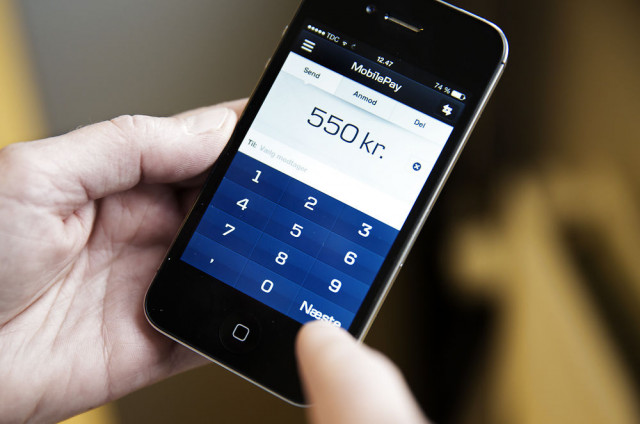
Mobile Pay in 2013. Photo: Erik Refner/Ritzau Scanpix
Get online
If you want to get online, either through cellular data on your mobile phone or through a broadband connection, you will most likely need a CPR number for long-term subscriptions.
Prepaid, refill-able sim cards can be bought at many retailers and supermarkets without showing identification.
Sim cards can also be ordered online for free, but you will need a Danish address, which you will also need to present for other services if you do not have a CPR number.
In most cases, though, it is not possible to subscribe to a broadband connection without a CPR number.
Pretending to be potential customers, we inquired about mobile subscription with telecommunication company and carrier Telia, whose customer service department told us that a CPR number is required, whether for mobile services or landline broadband connection.
Last year, Telia announced that the company was no longer providing the service of prepaid sim cards, stating that most prepaid sim cards holders were anonymous and this prevented optimal customer service.
Another Danish telecommunications company, TDC, also lists the CPR number as a main requirement for mobile subscriptions. But TDC communications officer Nis Peder Kolby told The Local that the exception to the CPR requirement was that foreigners can get a prepaid sim card.
“Yes, CPR is in principal necessary to set up a mobile phone contract, though you can as a foreigner go into a YouSee [TDC’s retailer, ed.] store and open an account against a deposit.
“Our post-paid accounts are generally available for foreigners if you as a customer at the time of the agreement can give YouSee information about the customer's name and registered address as well as any e-mail address. YouSee may also require the CPR number for credit assessment and for ongoing validation of customer information,” Kolby explained.
Get in shape
“The first month [in Denmark] was okay without CPR, but the biggest issue for me was that I could not join a gym without the CPR number,” Lipka says, adding that she eventually managed to get a membership with the Fitness World chain by supplying an alternative form of personal identification until she receives her CPR card.
Typically, gyms in Denmark ask for a CPR number as a form of identification for membership applications.
We asked the Fitness DK gym if it was possible to obtain membership without a CPR number. The response was yes, with the caveat that you cannot have an auto-pay membership.
We also asked Urban Gym, who said that it is possible to become a member without a CPR number, but you must provide a picture of your passport and your Danish address, as well as your Danish phone number – which, as we have seen, is not straightforward to obtain without the yellow personal ID card.
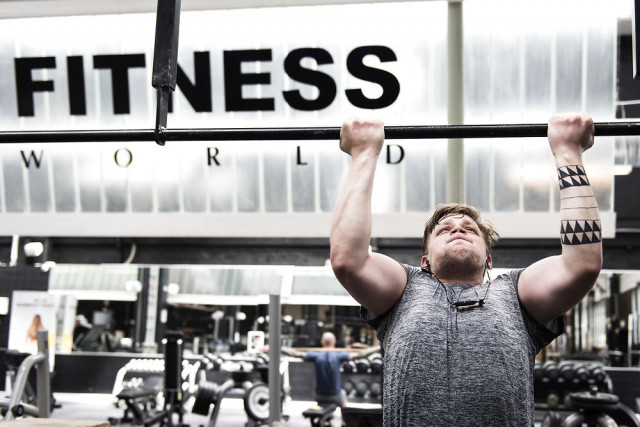
File photo: Malene Anthony Nielsen/Ritzau Scanpix
Speak the language
In order to register at a Danish language school, you will need a CPR number.
Refugees and family reunified residents must attend Danish language courses as part of an integration programme.
For those who come to the country for work or study reasons, entry to the language school system also requires the correct paperwork.
We tried to register as students at Lærdansk Aarhus, one of the biggest Danish language schools in Denmark, without a CPR number.
A member of staff told us that the CPR number was required, “or else you can apply through the municipality,” explaining that if you still don’t have a CPR number, municipalities can enrol you on Danish language course until you get one.
We also contacted the development manager at Lærdansk Aarhus, Kirstine Alexandersen, who said that the school has a special agreement with Aarhus University and the municipality to accept the registration of international students without a CPR number, adding that exceptions differ in each municipality.
Alexandersen also said that if an applicant wished to register as a student at Lærdansk without a CPR number, he or she could be enrolled if they are EU citizens and have an employment contract in Denmark.
Other private schools could have different requirements for enrolment, and in Copenhagen there are increasing numbers of private schools, she added.
READ ALSO: Danish: Is it really so hard to learn?
Copenhagen Language Center is one of the language schools in Copenhagen included in an agreement to offer free language lessons on behalf of Copenhagen Municipality. The school’s website states the CPR number at the top of the list of requirements to be enrolled.
Contacting the school as potential applicants, we were informed that, although enrolment is not possible without a CPR number, the school accepts emails with personal information, including a Danish address, to reserve a place in one of the classes until a CPR number has been received.
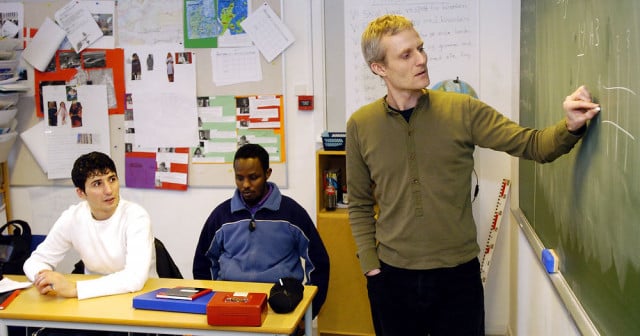
A Danish language school in 2006. File photo: Richard Sylvestersen/Ritzau Scanpix
Once you have the yellow card in your pocket, the CPR number entitles you to free classes at Danish language schools – for now. The government recently announced that charges for the classes will be introduced from June.
READ ALSO: Tax plan means uncertainty for students and teachers at Denmark's language schools
The results of our inquiries suggest that, although the CPR number is undoubtedly a necessity for long-term stays in Denmark, alternative forms of personal identification can be used in some cases to navigate the requirement of the CPR number as a shorter-term measure.
But the starting point of Danish bureaucracy is a Danish address, as the main alternative for the yellow card for most of the services that we tried was a permanent address in Denmark.
Another finding that stood out was that, across most of the areas we probed, answers tended to vary from one company or individual to another, emphasising that it's worth asking for a second opinion if given a negative answer.
Did you find this article helpful? Have you had different experiences to us? What other practical aspects of life in Denmark would you like us to look into? Send us your feedback – we’d love to hear your thoughts.
Comments
See Also
The CPR card, typically referred to as the yellow health insurance card, is a form of personal identification using individual personal registration (CPR) numbers, and residents of Denmark are legally required to have one.
Also a form of civil registration (the ‘CPR’ abbreviation comes from the Danish term Det Centrale Personregister), the card functions primarily as a healthcare card, providing access to the state funded public healthcare system.
But the CPR number is needed for a lot more than just healthcare.
Most state and municipal services require the yellow card as a form of personal identification and it is also a requirement for things like banks, telephone companies and even gyms.
Newcomers to Denmark are issued with cards after applying to their local municipalities with residency permit information. A residency permit is the official document needed to stay in the country for more than three months, or more than six months from your entry date if you are seeking a job. The process of obtaining the yellow card might take up to three weeks.
The common wisdom is that it's virtually impossible to get by in the Scandinavian country without the sacred 10-digit code.
But is that really true? Would a newcomer to the country without one be left stranded?
The Local put the theory to the test.
Banking and MobilePay
Using a foreign bank account in Denmark is not always the best option, some internationals would argue.
Dóra Lipka, a Hungarian student doing an internship in Aarhus, moved to Denmark in early February 2018. She spent three weeks waiting to get her residency permit and subsequently, a CPR number.
“It is not easy because before I moved here I asked my [Hungarian] bank and they said a fee will be deducted every time I withdraw cash, but luckily in Denmark, everything works with credit cards, so it is fine,” she says.
But if you would rather have an account at a Danish bank to avoid the fee for transactions, you might also be able to do so without a CPR number.

File photo: Uffe Weng/Ritzau Scanpix
Some banks ask for a CPR number as a requirement to initiate an account.
Pretending to be a newcomer to Denmark, we reached out to Danske Bank, inquiring about the necessity of having a CPR number. The customer service response was that it was an essential requirement to open a bank account.
However, other banks accept alternative forms of personal identification. For instance, Nordea accepts a Tax Identification Number (TIN) instead, according to press consultant at Nordea Bank Mads Sixhøj.
“Foreign citizens need, just like Danish citizens, to show ID, a CPR/TIN-number and have an acceptable purpose to open an account,” Sixhøj told The Local.
We also spoke to the communications manager at Syd Bank, Dan Prangsgaard, who told us that the main requirement to initiate an account is a valid proof of identity.
“[CPR] is not an absolute requirement, the only absolute requirement is presenting a valid identity,” Prangsgaard said.
READ ALSO: Foreign employees entitled to Danish bank accounts: Finance Denmark
But although it might be possible to open a bank account without a personal ID number, you still wouldn’t be able to use MobilePay.
First introduced in 2013 by Danske Bank, MobilePay is a mobile banking app that requires a Danish bank account, Danish mobile phone number and CPR number to log in.
The app is widespread for financial transactions around Denmark, and used by both big and small businesses. It is commonly used to pay at supermarkets and coffee shops, and to send and receive money with other MobilePay users.
More than 3.7 million Danes and 75,000 businesses use the app, which functions through the Danish banking system, according to MobilePay’s official website.
We contacted the app’s customer service, who said that to be a MobilePay user, you need to have a Danish bank account, a Danish cell phone number and a CPR number.
So whether you choose to use your foreign bank card in Denmark or open an account a Danish bank, if you do so without a CPR number you cannot use MobilePay.
In Lipka’s case, the CPR number was not the only thing hindering her from using MobilePay – she also did not have a Danish cell phone number.

Mobile Pay in 2013. Photo: Erik Refner/Ritzau Scanpix
Get online
If you want to get online, either through cellular data on your mobile phone or through a broadband connection, you will most likely need a CPR number for long-term subscriptions.
Prepaid, refill-able sim cards can be bought at many retailers and supermarkets without showing identification.
Sim cards can also be ordered online for free, but you will need a Danish address, which you will also need to present for other services if you do not have a CPR number.
In most cases, though, it is not possible to subscribe to a broadband connection without a CPR number.
Pretending to be potential customers, we inquired about mobile subscription with telecommunication company and carrier Telia, whose customer service department told us that a CPR number is required, whether for mobile services or landline broadband connection.
Last year, Telia announced that the company was no longer providing the service of prepaid sim cards, stating that most prepaid sim cards holders were anonymous and this prevented optimal customer service.
Another Danish telecommunications company, TDC, also lists the CPR number as a main requirement for mobile subscriptions. But TDC communications officer Nis Peder Kolby told The Local that the exception to the CPR requirement was that foreigners can get a prepaid sim card.
“Yes, CPR is in principal necessary to set up a mobile phone contract, though you can as a foreigner go into a YouSee [TDC’s retailer, ed.] store and open an account against a deposit.
“Our post-paid accounts are generally available for foreigners if you as a customer at the time of the agreement can give YouSee information about the customer's name and registered address as well as any e-mail address. YouSee may also require the CPR number for credit assessment and for ongoing validation of customer information,” Kolby explained.
Get in shape
“The first month [in Denmark] was okay without CPR, but the biggest issue for me was that I could not join a gym without the CPR number,” Lipka says, adding that she eventually managed to get a membership with the Fitness World chain by supplying an alternative form of personal identification until she receives her CPR card.
Typically, gyms in Denmark ask for a CPR number as a form of identification for membership applications.
We asked the Fitness DK gym if it was possible to obtain membership without a CPR number. The response was yes, with the caveat that you cannot have an auto-pay membership.
We also asked Urban Gym, who said that it is possible to become a member without a CPR number, but you must provide a picture of your passport and your Danish address, as well as your Danish phone number – which, as we have seen, is not straightforward to obtain without the yellow personal ID card.

File photo: Malene Anthony Nielsen/Ritzau Scanpix
Speak the language
In order to register at a Danish language school, you will need a CPR number.
Refugees and family reunified residents must attend Danish language courses as part of an integration programme.
For those who come to the country for work or study reasons, entry to the language school system also requires the correct paperwork.
We tried to register as students at Lærdansk Aarhus, one of the biggest Danish language schools in Denmark, without a CPR number.
A member of staff told us that the CPR number was required, “or else you can apply through the municipality,” explaining that if you still don’t have a CPR number, municipalities can enrol you on Danish language course until you get one.
We also contacted the development manager at Lærdansk Aarhus, Kirstine Alexandersen, who said that the school has a special agreement with Aarhus University and the municipality to accept the registration of international students without a CPR number, adding that exceptions differ in each municipality.
Alexandersen also said that if an applicant wished to register as a student at Lærdansk without a CPR number, he or she could be enrolled if they are EU citizens and have an employment contract in Denmark.
Other private schools could have different requirements for enrolment, and in Copenhagen there are increasing numbers of private schools, she added.
READ ALSO: Danish: Is it really so hard to learn?
Copenhagen Language Center is one of the language schools in Copenhagen included in an agreement to offer free language lessons on behalf of Copenhagen Municipality. The school’s website states the CPR number at the top of the list of requirements to be enrolled.
Contacting the school as potential applicants, we were informed that, although enrolment is not possible without a CPR number, the school accepts emails with personal information, including a Danish address, to reserve a place in one of the classes until a CPR number has been received.

A Danish language school in 2006. File photo: Richard Sylvestersen/Ritzau Scanpix
Once you have the yellow card in your pocket, the CPR number entitles you to free classes at Danish language schools – for now. The government recently announced that charges for the classes will be introduced from June.
READ ALSO: Tax plan means uncertainty for students and teachers at Denmark's language schools
The results of our inquiries suggest that, although the CPR number is undoubtedly a necessity for long-term stays in Denmark, alternative forms of personal identification can be used in some cases to navigate the requirement of the CPR number as a shorter-term measure.
But the starting point of Danish bureaucracy is a Danish address, as the main alternative for the yellow card for most of the services that we tried was a permanent address in Denmark.
Another finding that stood out was that, across most of the areas we probed, answers tended to vary from one company or individual to another, emphasising that it's worth asking for a second opinion if given a negative answer.
Did you find this article helpful? Have you had different experiences to us? What other practical aspects of life in Denmark would you like us to look into? Send us your feedback – we’d love to hear your thoughts.
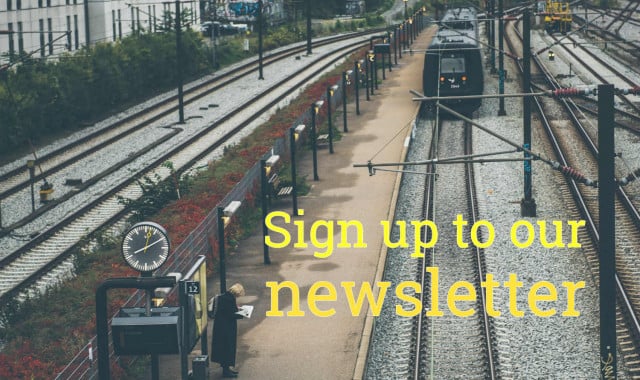
Join the conversation in our comments section below. Share your own views and experience and if you have a question or suggestion for our journalists then email us at [email protected].
Please keep comments civil, constructive and on topic – and make sure to read our terms of use before getting involved.
Please log in here to leave a comment.